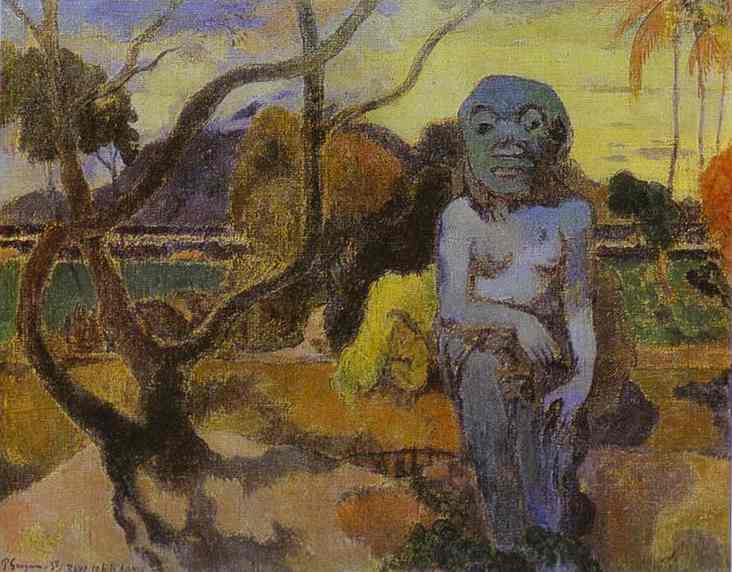描述
Paul Gauguin's "Idol" (1898) represents a crucial moment in the evolution of modern art and reveals the painter's fascinations with spirituality, mythology and cultural identity. This painting is a clear reflection of his search for a visual language that transcended the expectations of Western art of his time, converging symbolic, formal and compositional elements that invite the viewer to an introspective experience.
In “Idol,” Gauguin presents a central figure that evocatively stands out among an almost abstract environment. The color palette used is intensely rich and saturated, where earthy tones and variations of yellow, orange and green predominate. This chromatic choice contributes to creating an atmosphere of mystery and spirituality, highlighting the relevance of this iconic figure that seems to take center stage in a context that mixes the real and the mythical. The figure, with its stylized and almost primitive style, invites the viewer to reflect on the cultural and spiritual origins surrounding the concept of the idol. Through its simplified forms and its almost sculptural representation, Gauguin confronts us with a vision that challenges the notion of painting as a mere mirror of reality.
The composition of the work is fundamental to understanding its impact. The contours of the figure are drawn in such a way that they contrast effectively with the background, which is treated with a certain immediacy, perhaps suggesting a deeper or metaphorical reality that is not captured by the naked eye. The central figure is surrounded by an aura of mystery, emphasized by the way it is placed in the pictorial space, evoking a sense of contemplation. This fusion of the figurative with the abstract resonates with Gauguin’s quest to simplify form and emphasize the essence of what he sought to represent.
The work is part of Gauguin's passion for non-Western cultures and his desire to find an artistic representation that moves away from the realism of the past. Based on his travels to Polynesia, where Gauguin drew great inspiration, "Idol" can be interpreted as a search for authenticity in an increasingly industrialized and alienating world. The idolatrous figure does not only allude to cult objects, but suggests an idol in a broader sense, as a symbol of spirituality and connection to the sacred.
The complexity of “Idol” can also be understood through its relationship to other works by Gauguin and his contemporaries. The work reflects similar concerns found in his other creations, where symbolism and the use of color become tools to explore personal and collective narrative. Through his exploration of figures and themes, Gauguin moved away from academic norms in an attempt to rediscover the primal purity of art.
When looking at “Idol,” the viewer is not only confronted with a masterpiece of composition and color, but is also invited to connect with Gauguin’s personal journey. More than just an object of aesthetic admiration, this painting stands as a testimony to the artist’s search for the roots of human expression, approaching the most intimate and spiritual aspects of living experience. The work then becomes a starting point for a profound dialogue about identity, culture and the essence of art in a constantly changing world.
KUADROS ©, a famous painting on your wall.
Hand-made oil painting reproductions, with the quality of professional artists and the distinctive seal of KUADROS ©.
Painting reproduction service with satisfaction guarantee. If you are not completely satisfied with the replica of your painting, we will refund 100% of your money.

